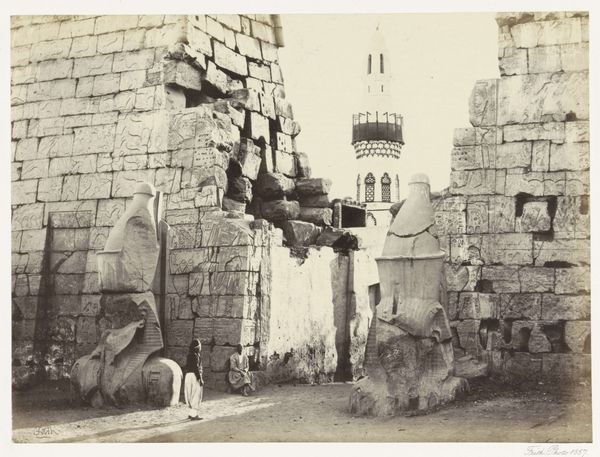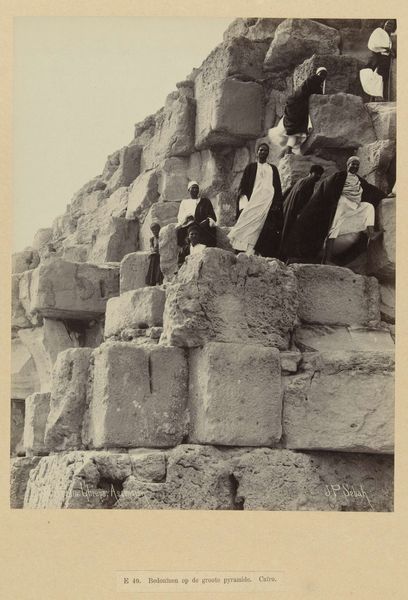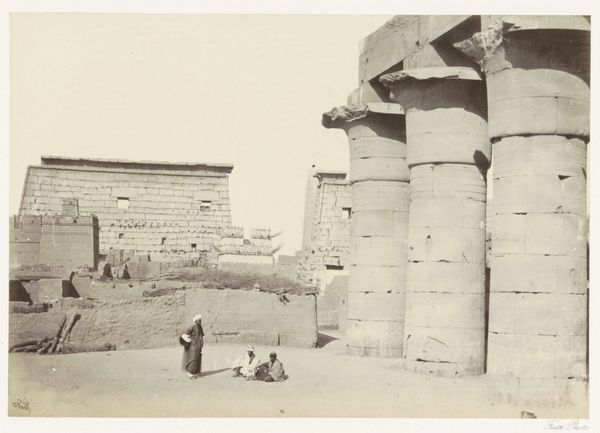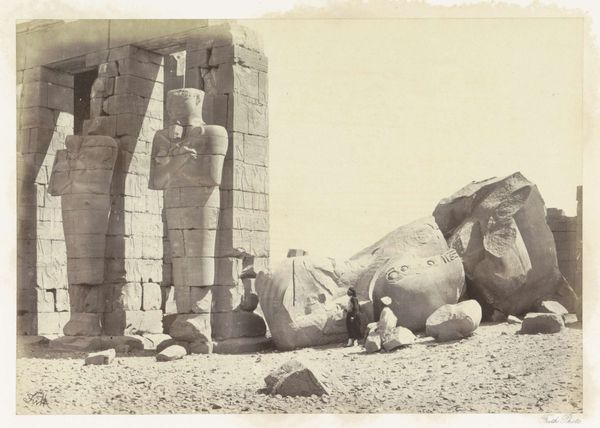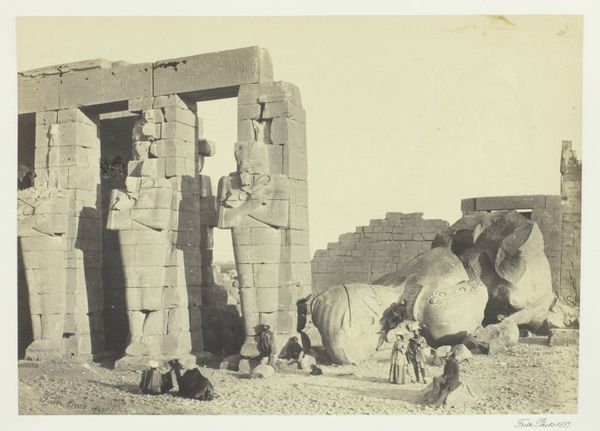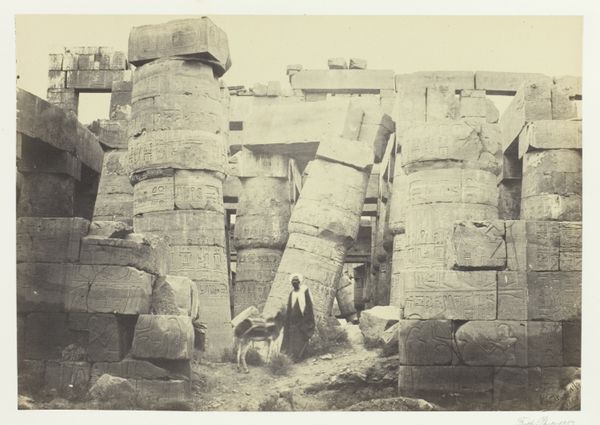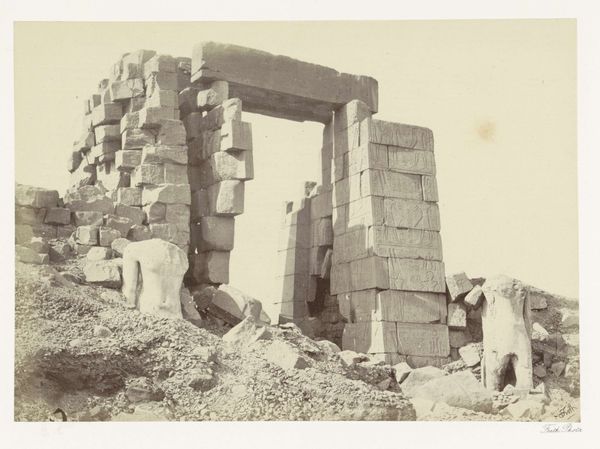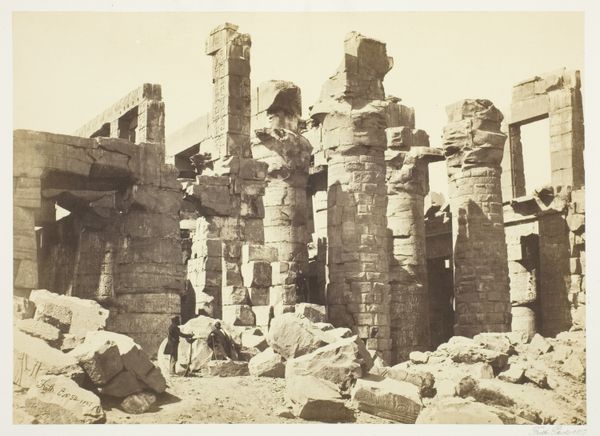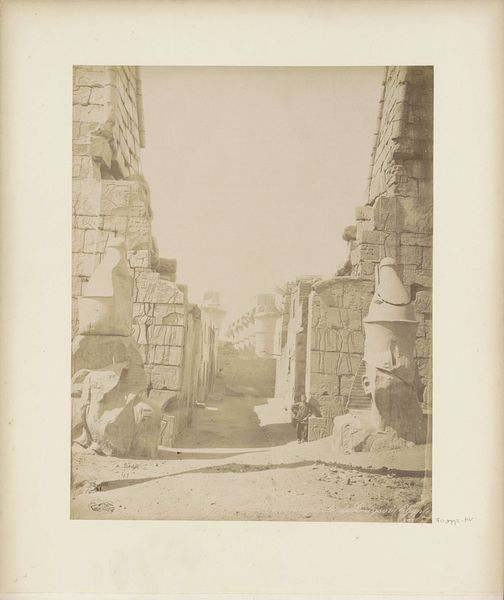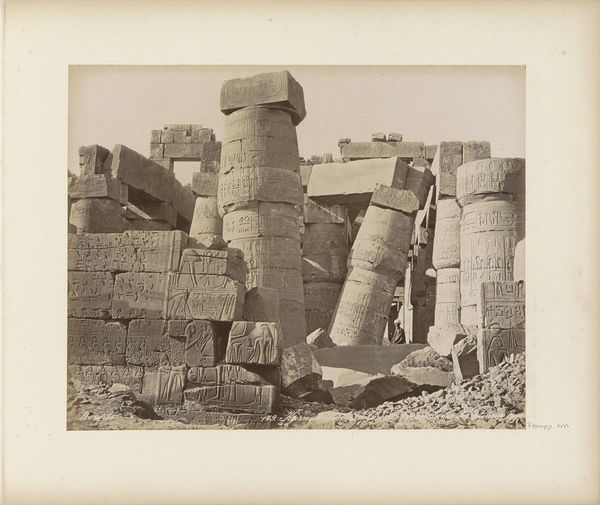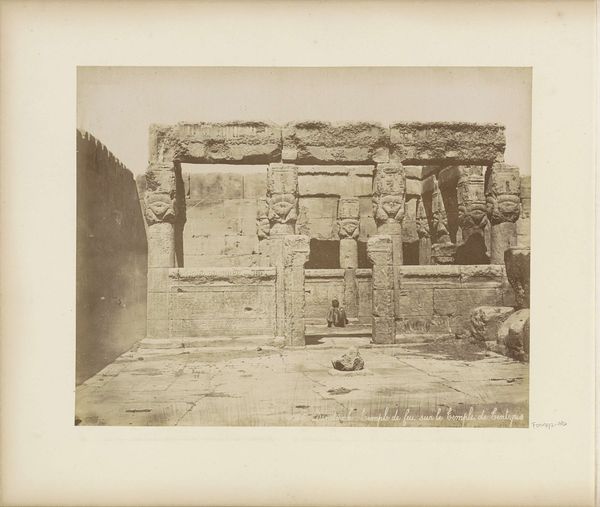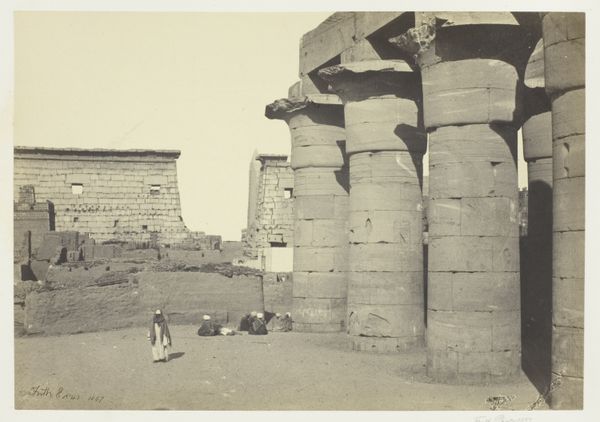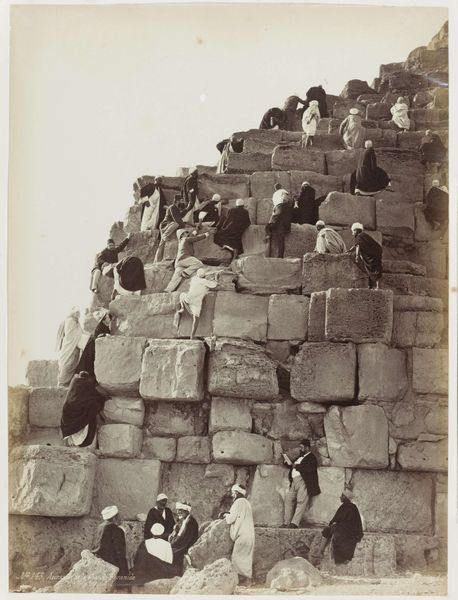
print, photography
#
16_19th-century
# print
#
landscape
#
ancient-egyptian-art
#
photography
#
egypt
#
ancient-mediterranean
#
men
Dimensions: 16.1 × 23.2 cm (image/paper); 29 × 42.6 cm (album page)
Copyright: Public Domain
Curator: Francis Frith's 1857 photograph, "Entrance to the Great Temple, Luxor," really captures a moment in time. The albumen print shows the temple entrance alongside other, more modern buildings. Editor: There’s such a striking contrast. The imposing, damaged architecture speaks of a lost civilization, yet there are modern figures in the doorway that feel at odds with that history. It’s…melancholic. Curator: I agree; the fragmentation of the statues and walls provides powerful commentary on the vicissitudes of history, while raising questions about contemporary cultural preservation. What does it mean when structures intended to communicate power and longevity fall into such disrepair? Editor: And what does it mean to look at that temple through the lens of colonialism, given that Frith was a British photographer operating during a period of intense European interest and intervention in Egypt? There's a way in which this image, meant to document, also participates in a particular power dynamic. The people inside the entrance look much smaller by comparison to these once giant statues. Curator: Precisely. And think about photography as a technology in 1857, its claim to objectivity, and the inherently subjective choices Frith makes regarding framing and composition. He's showing us the temple, but also showing the modern presence there through his colonial lens, so how does he contextualize them in relation to the temple’s purpose? Editor: The two figures almost feel like guardians, juxtaposed with this ancient place—the one wears very traditional Egyptian clothing, but the other is adorned in more "modern" textiles, indicating perhaps this bridge of cultural integration within ancient Egypt. There is so much history in a single snapshot. The very fact that this image exists is already so special, especially considering how time goes on without recognition. Curator: I find it truly remarkable how a seemingly straightforward image of a historical site can generate so many layers of interpretation. Editor: Absolutely. It's a reminder of how intertwined the past and present truly are, and the crucial role art plays in that conversation.
Comments
No comments
Be the first to comment and join the conversation on the ultimate creative platform.
